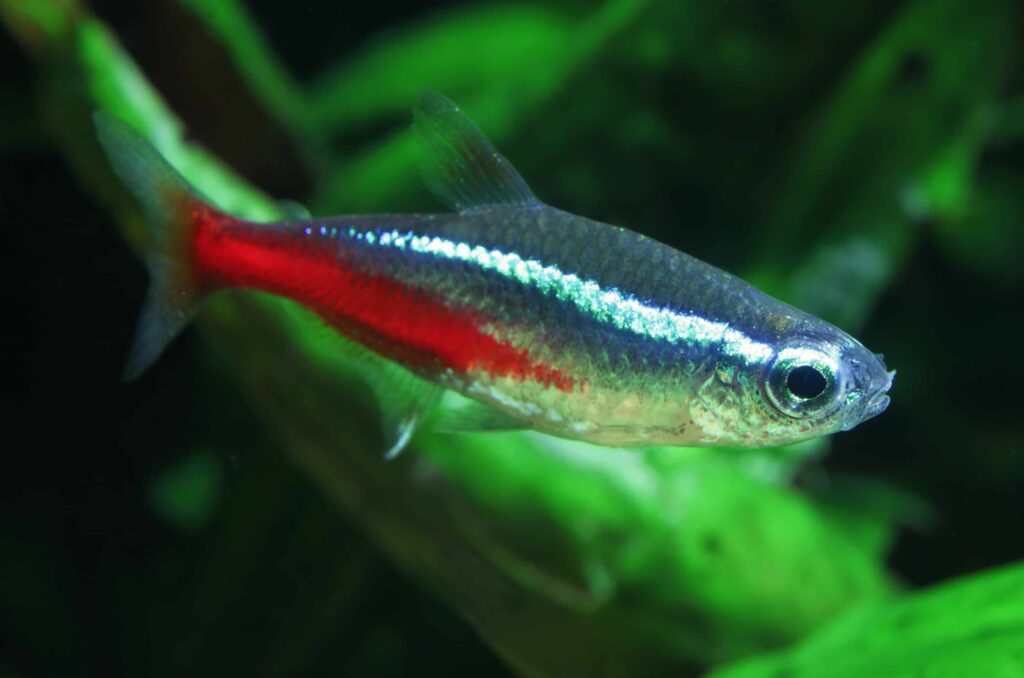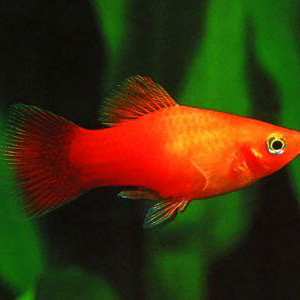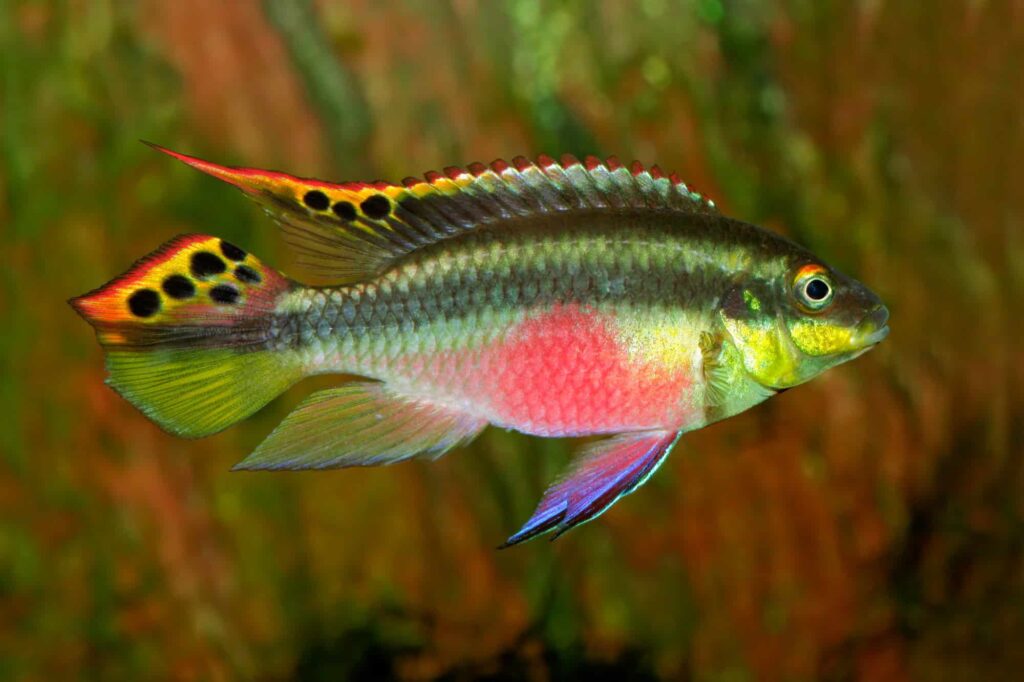“Discover the top freshwater fish species for your aquarium with our ultimate guide. Learn about care requirements, compatibility, and unique traits to make an informed decision for your aquatic setup.”
9 Best Aquarium Fish for Unwinding
Aquariums can so unwind. The sound of delicately streaming water and the sluggish development of wonderful fish quiets the spirit. In any case, this harmony can conclude the event that your fish begin battling or on the other hand assuming they’re high support and extreme to raise.
The kinds of fish you pick assume a key part in how serene your aquarium is. We should take a gander at the main nine fish if saving fish for unwinding is your objective.
1. Neon Tetra

Neon Tetras are close to nothing, enthusiastic fish that have entranced aquarium fans for a seriously prolonged period. Known for their stunning brilliant blue and red stripes, these fish change their energy to any tank. Beginning from the streams and streams of South America, Neon Tetras are social creatures that twist in get-togethers, seeking after them a marvelous choice for the neighborhood.
Care Essentials
Neon Tetras are to some degree easy to truly zero in on, making them fitting for juveniles. Here are some key thought requirements to recollect:
Tank Size: A base tank size of 10 gallons is recommended for a little assembling of Neon Tetras.
Water Limits: They slant toward fragile, fairly acidic water with a pH level placed in the scope of 6.0 and 7.0. Standard water changes and fitting filtration are essential to stay aware of water quality.
Temperature: Neon Tetras flourish in tropical temperatures going 26°C). from 72°F to 78°F (22°C t
Diet: These omnivorous fish have a moved eating routine and will eat chip food, freeze-dried bloodworms, and little bugs. It’s crucial to give a fair eating routine to ensure their prosperity and dynamic tones.
Tank Plan
Laying out a sensible environment for Neon Tetras incorporates reflecting their typical climate:
Aquascape: Combine live plants, driftwood, and rocks to make covering spots and duplicate the thick vegetation found in their nearby surroundings.
Lighting: Moderate lighting is sufficient for Neon Tetras, as excessive light can cause strain and green development advancement.
Substrate: Use fine-grained substrates like sand or little stone to copy the riverbeds they possess in nature.
Similitude
Neon Tetras are peaceful and exist together well with other non-powerful fish species. In any case, it’s essential to do whatever it takes not to keep them with greater, powerful fish that should think about them to be conceivable prey.
Prosperity and Lead
Strong Neon Tetras are dynamic and show vivacious tones. Pay special attention to any signs of infirmity, similar to the loss of assortment, lethargy, or abnormal approach to acting. Staying aware of extraordinary water quality and having a fair eating routine will help prevent ordinary sicknesses.
2. Guppy

Guppies are one of the most popular and dear freshwater fish among aquarium fans. Known for their dynamic tones, exuberant attitude, and novel models, guppies change up any aquarium setting. These little yet solid fish are perfect for the two juveniles and experienced aquarists, making them a staple in the domain of fishkeeping.
Care Requirements
Guppies are reasonably easy to truly zero in on, but the truth be told do have unequivocal prerequisites to thrive:
Tank Size: A base tank size of 10 gallons is sensible for a little assembling of guppies, but greater tanks give truly swimming space and think about a greater fish neighborhood.
Water Limits: Guppies favor fairly hard water with a pH level someplace in the scope of 7.0 and 8.0. Staying aware of stable water limits is central to their prosperity and success.
Temperature: Guppies thrive in tropical temperatures going from 75°F to 82°F (24°C to 28°C).
Diet: As omnivorous fish, guppies require a moved eating routine involving first-class piece food, freeze-dried bloodworms, and saltwater shrimp. Improving their eating routine with vegetables like zucchini can in like manner be useful.
3. Corydoras Catfish

Corydoras Catfish, now and again suggested as “Cory Cats” or basically “Cories,” are popular freshwater fish known for their momentous appearance and calm nature. These base dwelling scroungers are a main among aquarists for their ability to help with keeping the tank clean by eating additional food and green development. With their vivacious approach to acting and fascinating characters, Corydoras Catfish adds both allure and helpfulness to any aquarium game plan.
Care Necessities
Corydoras Catfish are respectably easy to truly zero in on, making them sensible for aquarists of all experience levels:
Tank Size: A base tank size of 20 gallons is proposed for a little assembly of Corydoras Catfish. A greater tank gives more space and allows a typical territory with above and beyond covering spots.
Water Limits: Corydoras are sensitive to unobtrusively hard water with a pH level someplace in the scope of 6.0 and 7.5. Staying aware of stable water limits is huge for their prosperity and success.
Temperature: Corydoras prosper in tropical temperatures going from 72°F to 78°F (22°C to 26°C).
Diet: As omnivorous foragers, Corydoras Catfish have a contrasted diet that consolidates sinking pellets, green development wafers, and minimal live or frozen food assortments like bloodworms and bitter water shrimp.
4. Platy

Platies are fiery and extravagant freshwater fish that have transformed into a main among aquarium darlings. Known for their exquisite tones, vivacious characters, and effortlessness of care, platies are a splendid choice for the two novices and experienced aquarists the equivalent. With their quiet nature and dynamic approach to acting, platies add an overflowing touch to any aquarium setting, making them a notable choice for the neighborhood.
Care Necessities
Platies are by and large easy to truly zero in on, making them ideal for aquarists, things being what they are:
Tank Size: A base tank size of 10 gallons is sensible for a little assembling of platies, yet greater tanks give truly swimming space and think about a greater fish neighborhood.
Water Limits: Platies incline in the direction of fairly hard water with a pH level someplace in the scope of 7.0 and 8.0. Staying aware of stable water limits is principal for their prosperity and success.
Temperature: Platies prosper in tropical temperatures going from 72°F to 78°F (22°C to 26°C).
Diet: As omnivorous fish, platies require a contrasted diet including magnificent chip food, freeze-dried bloodworms, and saltwater shrimp. Improving their eating routine with vegetables like zucchini can similarly be worthwhile.
Tank Plan
Laying out an interfacing with and empowering environment for platies can update their success:
Aquascape: Unite live plants, similar to Java vegetation and Vallisneria, to give covering spots and reenact their ordinary domain. Platies also value researching and swimming through plants.
Lighting: Moderate lighting is satisfactory for platies. Avoid outrageous lighting, as it can cause strain and advance green development improvement.
Substrate: Fine stone or sand substrate is perfect, as it grants platies to channel through the substrate searching for food without causing injury.
5. Molly

Mollies are famous freshwater fish known for their energetic tones, various examples, and enthusiastic characters. These flexible fish come in different shapes and sizes, making them #1 among aquarium lovers. With their tranquil nature and generally simple consideration prerequisites, mollies are an incredible decision for the two novices and experienced aquarists. Their flexibility to various water conditions and local area tank settings makes them an adaptable expansion to any aquarium.
Care Necessities
Mollies are moderately simple to focus on, however, they truly do have explicit necessities to flourish:
Tank Size: A base tank size of 20 gallons is suggested for a little gathering of mollies. A bigger tank gives swimming space and takes into consideration a common habitat with adequate concealing spots.
Water Boundaries: Mollies incline toward somewhat saline water with a pH level somewhere in the range of 7.5 and 8.5. They can adjust to freshwater conditions however may profit from the expansion of aquarium salt to imitate their normal natural surroundings.
Temperature: Mollies flourish in tropical temperatures going from 72°F to 78°F (22°C to 26°C).
Diet: Mollies are omnivorous and require a fluctuated diet comprising excellent chip food, green growth wafers, and little live or frozen food sources like bloodworms and saline solution shrimp. Enhancing their eating routine with vegetables like zucchini can likewise be useful.
Tank Arrangement
Establishing a reasonable climate for mollies includes emulating their normal living space:
Aquascape: Consolidate live plants, like Java greenery and Amazon blades, to give concealing spots and reproduce their regular territory. Mollies likewise appreciate investigating and swimming through plants.
Lighting: Moderate lighting is great for mollies. Keep away from extreme lighting, which can cause pressure and diminish their movement.
Substrate: Fine rock or sand substrate is great, as it permits mollies to filter through the substrate looking for food without causing injury.
Similarity
Mollies are quiet and coexist well with an assortment of tank mates:
Tank Mates: Reasonable tank mates for mollies incorporate other tranquil local area fish like platies, guppies, and swordtails. Try not to keep them with bigger, forceful fish that might scare or mischief them.
6. Keyhole Cichlid

Keyhole Cichlids are charming freshwater fish known for their undeniable keyhole-shaped stepping and tranquil nature. Beginning from the streams and floods of South America, these exquisite cichlids have obtained pervasiveness among aquarium devotees for their exceptional appearance and calm attitude. With their fragile demeanor and intriguing approach to acting, Keyhole Cichlids make an enchanting choice for the neighborhood, adding both greatness and character to any maritime environment.
Care Necessities
Keyhole Cichlids require unequivocal thought to prosper and flourish:
Tank Size: A base tank size of 30 gallons is proposed for two or three Keyhole Cichlids. A greater tank gives truly swimming space and thinks about standard natural surroundings with sufficient hiding spots and spaces.
Water Limits: Keyhole Cichlids favor fragile to fairly hard water with a pH level placed in the scope of 6.0 and 7.5. Staying aware of stable water limits is central to their prosperity and success.
Temperature: Keyhole Cichlids prosper in tropical temperatures going from 74°F to 78°F (23°C to 26°C).
Diet: Keyhole Cichlids are omnivorous and require a contrasted diet including phenomenal cichlid pellets, live or frozen food assortments like bloodworms, saltwater shrimp, and vegetables. A respectable gobbling routine will help with staying aware of their lively tones and in everyday prosperity.
7. Kribensis

Kribensis, generally called Kribs, are vivacious and attract freshwater cichlids that hail from the streams and floods of West Africa. These magnificent salmon are esteemed for their broadcasting vibes, bewildering models, and spellbinding approach to acting. With their tranquil demeanor and respectably straightforward thought essentials, Kribensis has transformed into a notable choice among aquarium enthusiasts, adding both heavenliness and character to any neighborhood.
Care Essentials
Kribensis require express thought to thrive and show off their most extreme limit:
Tank Size: A base tank size of 20 gallons is recommended for several Kribensis. A greater tank gives genuine swimming space and thinks about a typical environment with satisfactory covering spots and districts.
Water Limits: Kribensis favors fairly acidic to fair-minded water with a pH level someplace in the scope of 6.0 and 7.5. Sensitive to acceptably hard water is fitting for these fish, and staying aware of stable water limits is crucial for their prosperity and thriving.
Temperature: Kribensis prosper in tropical temperatures going from 75°F to 80°F (24°C to 27°C).
Diet: Kribensis are omnivorous and require a vacillated diet containing first-rate cichlid pellets, live or frozen food sources like bloodworms, saline water shrimp, and vegetables. A nice gobbling routine will help with staying aware of their exuberant tones and in everyday prosperity.
8. Kuhli Loach

Kuhli Loaches, generally called Coolie Loaches or Jaguar Loaches, are enchanting freshwater fish that add a phenomenal touch to any aquarium. Beginning from the streams and surges of Southeast Asia, these eel-like creatures are known for their smooth, delayed bodies and specific striped plans. With their serene nature and captivating approach to acting, Kuhli Loaches are a notable choice among aquarium fans expecting to change their character to their maritime game plans.
Care Essentials
Kuhli Loaches require express thought to prosper and include their greatest limit:
Tank Size: A base tank size of 20 gallons is recommended for a social occasion of Kuhli Loaches. These social salmon prosper in get-togethers of something like no less than five, so a greater tank gives truly swimming space and thinks about an ordinary territory with above and beyond covering spots.
Water Limits: Kuhli Loaches favors fragile to decently hard water with a pH level placed in the scope of 6.0 and 7.5. Staying aware of stable water limits is key to their prosperity and flourishing.
Temperature: Kuhli Loaches thrive in tropical temperatures going from 75°F to 82°F (24°C to 28°C).
Diet: Kuhli Loaches are omnivorous and require a varied eating routine involving first-rate sinking pellets, freeze-dried bloodworms, saline arrangement shrimp, and little shellfish. A fair gobbling routine will help with staying aware of their dynamic tones and in everyday prosperity.
9. Zebrafish (Danio rerio)

Zebrafish, legitimately known as Danio rerio, is close to nothing, an enthusiastic freshwater fish that has transformed into a staple in the aquarium side interest. Starting from the streams and rice paddies of South Asia, these adaptable salmon are prominent for their striking blue and gold stripes, making them an ostensibly captivating development to any tank. With their strong nature, dynamic approach to acting, and straightforwardness of care, zebrafish are an extraordinary choice for both beginner and experienced aquarists.
Care Essentials
Zebrafish have clear thought necessities, making them ideal for aquarists, things being what they are:
Tank Size: A base tank size of 10 gallons is sensible for a little assembling of zebrafish. A greater tank gives truly swimming space and thinks about a native environment with sufficient room to explore.
Water Limits: Zebrafish favor water with a pH level someplace in the scope of 6.5 and 7.5 and a temperature extent of 64°F to 77°F (18°C to 25°C). They are adaptable to various water conditions yet favor stable limits.
Diet: Zebrafish are omnivorous and will eat different food sources, including first-rate chip food, freeze-dried bloodworms, saltwater shrimp, and little bugs. A moved eating routine will help with staying aware of their prosperity and dynamic tones.
Which fish is freshwater fish?
Newwater fishes are the fishes tracked down in freshwater. They are found in new water bodies, for example, streams, lakes, lakes, and so on. Instances of new water fishes are Rohu, catla, mali, singhara, and calabash.
What is the best freshwater fish to have?
We should investigate the main 10 best freshwater fish for your aquarium.
Neon Tetra. Presumably one of the most notable freshwater species on this rundown, the Neon Tetra is a little, dainty, and simple-to-mind fish that is great for new proprietors.
Guppies.
Mollies.
Betta Fish.
Goldfish.
Angelfish.
Brilliant Bantam Spikes.
Rainbowfish.
Do freshwater fish drink?
Just saltwater fish drink. In freshwater, the fish is “saltier” than the general climate. Water moves into the fish without really trying, inactively, through the gills the skin, and the stomach. Fish need to dispose of this overabundance of water by peeing weak pee.
Conclusion
Picking the right freshwater fish for your aquarium is an astonishing excursion that offers vast opportunities for innovativeness, excellence, and learning. Whether you’re a fledgling searching for low-upkeep choices or an accomplished aquarist looking for dynamic and novel species, an ideal fish is standing by to join your sea-going world.
By taking into account factors like fish similarity, tank size, and care necessities, you can establish an agreeable and flourishing sea-going climate that gives pleasure and unwind to your day-to-day existence. Make sure to investigate every species completely, give reasonable natural surroundings, and keep up with ideal water conditions to guarantee the well-being and joy of your fish.
With legitimate consideration and consideration, your freshwater aquarium can turn into a dazzling point of convergence in your home, offering vast long periods of delight and marvel. Embrace the excursion of fishkeeping, and let the magnificence of these oceanic animals enhance your life for quite a long time into the future. Blissful fishkeeping!
Recent Post
“Betta Fish Varieties: A Comprehensive Guide to Types and Care”
